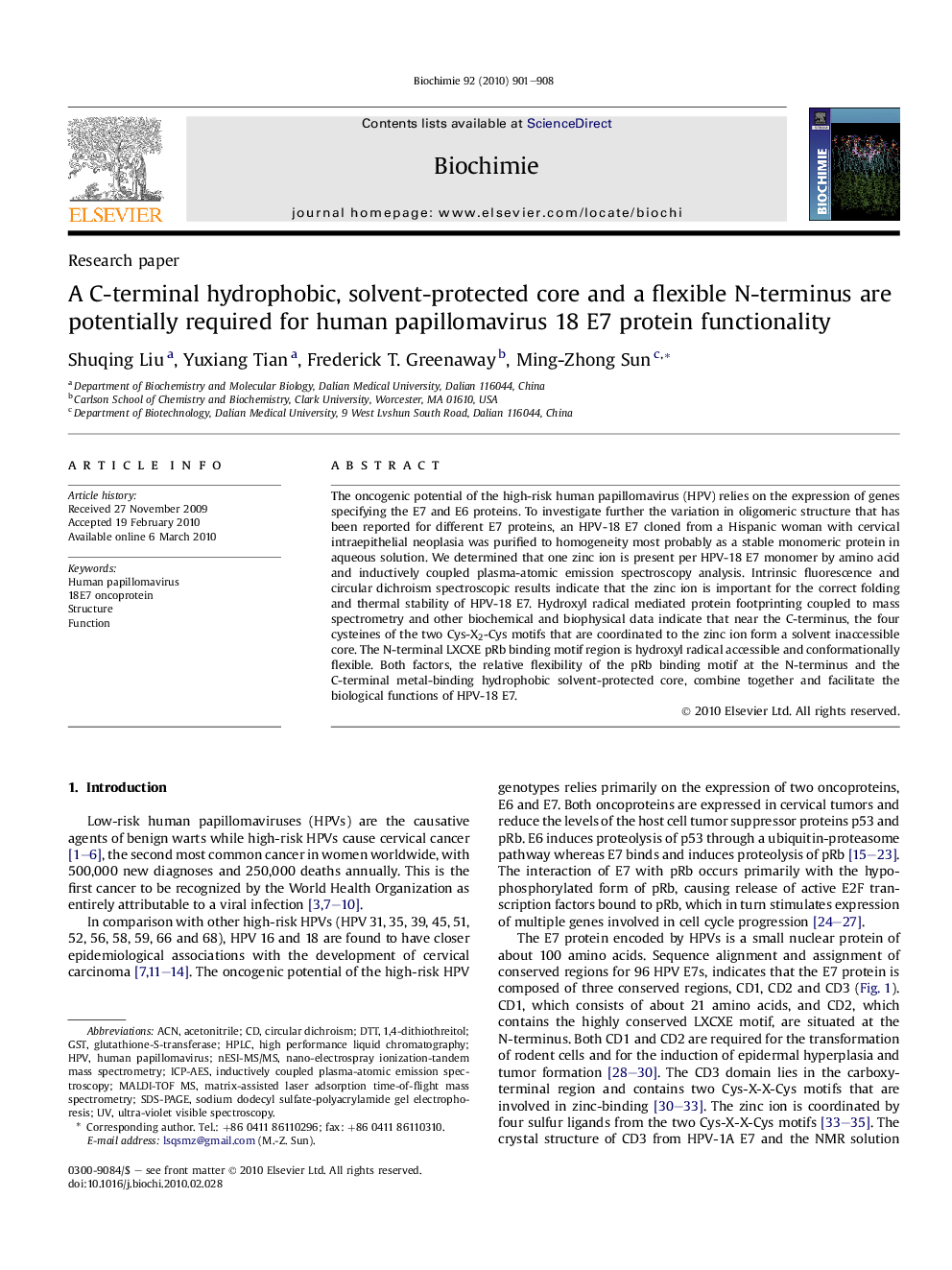| Article ID | Journal | Published Year | Pages | File Type |
|---|---|---|---|---|
| 1952767 | Biochimie | 2010 | 8 Pages |
Abstract
The oncogenic potential of the high-risk human papillomavirus (HPV) relies on the expression of genes specifying the E7 and E6 proteins. To investigate further the variation in oligomeric structure that has been reported for different E7 proteins, an HPV-18 E7 cloned from a Hispanic woman with cervical intraepithelial neoplasia was purified to homogeneity most probably as a stable monomeric protein in aqueous solution. We determined that one zinc ion is present per HPV-18 E7 monomer by amino acid and inductively coupled plasma-atomic emission spectroscopy analysis. Intrinsic fluorescence and circular dichroism spectroscopic results indicate that the zinc ion is important for the correct folding and thermal stability of HPV-18 E7. Hydroxyl radical mediated protein footprinting coupled to mass spectrometry and other biochemical and biophysical data indicate that near the C-terminus, the four cysteines of the two Cys-X2-Cys motifs that are coordinated to the zinc ion form a solvent inaccessible core. The N-terminal LXCXE pRb binding motif region is hydroxyl radical accessible and conformationally flexible. Both factors, the relative flexibility of the pRb binding motif at the N-terminus and the C-terminal metal-binding hydrophobic solvent-protected core, combine together and facilitate the biological functions of HPV-18 E7.
Keywords
DTTACNGSTICP-AES1,4-dithiothreitolAcetonitrilesodium dodecyl sulfate-polyacrylamide gel electrophoresisSDS-PAGEFunctioncircular dichroismStructureinductively coupled plasma-atomic emission spectroscopyMALDI-TOF MSHuman papillomavirusHPVhigh performance liquid chromatographyHPLCglutathione-S-transferase
Related Topics
Life Sciences
Biochemistry, Genetics and Molecular Biology
Biochemistry
Authors
Shuqing Liu, Yuxiang Tian, Frederick T. Greenaway, Ming-Zhong Sun,
